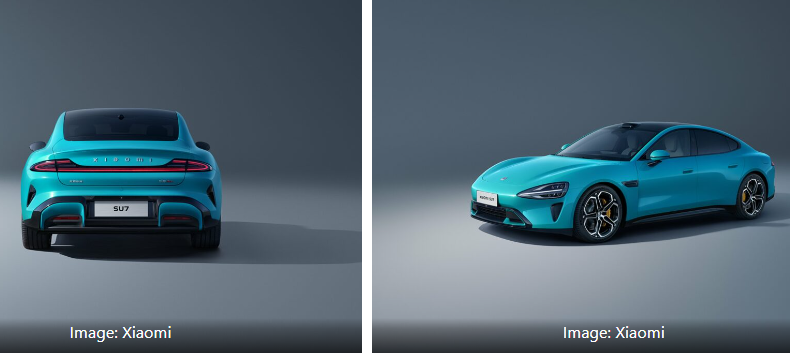All You Need to Know About the Xiaomi SU7 EV: Specifications, Range, and Pricing
Xiaomi is known for selling smartphones and tech at cheap costs. They compete with other brands to offer these things. As the world moves to electric cars, this company has decided that it will come into the market of electricity-powered vehicles with two car types – Xiaomi SU7 and high end model called Max. Here’s a complete explanation of these machines.

Xiaomi SU7: Design Elements
Xiaomi’s entry into the electric vehicle sector displays a mix of various vehicle designs. The headlights at the front are like a McLaren. The whole shape and design from behind reminds us of Porsche’s Taycan car, but in a simpler way. The size of the SU7 EV is like Tesla’s Model S. It measures 4,997 mm long and width-wise it stands at 1,963mm wide. Height wise its not too big either at around 1,455mm high overall length starts from Editorial note: this post requires context for a fuller understanding but here are
One great thing about Xiaomi’s electric car is its amazing wind-stopping score of 0.195, which beats all other vehicles that are made now for staying strong against the wind. It’s important to note that wind resistance impacts a car’s aerodynamics: lower ratings translate to better performance in aspects such as range and speed.
Regarding storage capacity, both versions offer 517 liters of trunk space and an added 105 liters in the frunk.
Xiaomi SU7: Performance Factors
With Xiaomi aiming to overthrow competitors like Tesla, they emphasize performance and range. The basic rear-wheel-drive SU7 EV weighs about 2 tons and offers 299 horsepower with 400 Nm of torque—allowing it to reach 100 km/h in just 5.28 seconds before topping out at 210 km/h.
Instead, the SU7 EV Max weighs about 2.2 tones and has amazing power of 673 horses with 838 Nm torque strength. This makes it very fast, even faster than the Porsche Taycan and Tesla Model S. With a top speed of 265 km/h, this car is quick to reach up to 100 km in just under three seconds.
Battery Range
The most significant topic of discussion surrounding Xiaomi’s event was the battery range. They claim that the standard SU7 EV—with a 73.6 kWh battery—achieves a 600 km CLTC range, while its max counterpart has a 101 kWh battery and promises an astounding 800 km.
However, considering that the China Light-Duty Vehicle Test Cycle (CLTC) is a less comprehensive assessment than the WLTP tests, which analyze EV range under various conditions and parameters, these numbers could be slightly inflated. To estimate the WLTP range from CLTC data, multiply the range by 0.82. Doing so reveals that the regular SU7 EV would offer around 492 km of range, while the max version could potentially reach up to 656 km.
Charging
Filling up electric cars (EVs) can be harder than putting gas in regular engine machines (ICE), because first you need to find the right charger and then it takes around 30-40 minutes for your car’s battery. But, Xiaomi says its SU7 EV Max does great. It can go up to 220 km with only charging for five minutes. A 15-minute charge can add about 500 km range. This makes it one of the quickest to charge cars you can get.
Interiors
Xiaomi’s SU7, like other EVs, comes equipped with a large 16.1-inch 3K center display powered by the company’s proprietary HyperOS—a feature that might attract Xiaomi phone fans. The car’s interior also offers heated and ventilated front seats and a panoramic glass sunroof while maintaining a minimalist aesthetic.
Autopilot
Self-driving capabilities have been a significant focus for the SU7 EV, as Xiaomi showcased its ability to navigate China’s crowded streets under standard and snowy conditions. A demonstration video also highlighted the vehicle’s capacity to self-park in tight spaces. The veracity of these claims will be put to the test once the car is released to the public.

Xiaomi SU7 EV Pricing
Though official pricing and global availability remain uncertain, recent speculations suggest that the standard variant could be priced around $60,000. For comparison, Tesla’s Model S starts at $74,000 and Porsche’s Taycan at $90,000.
